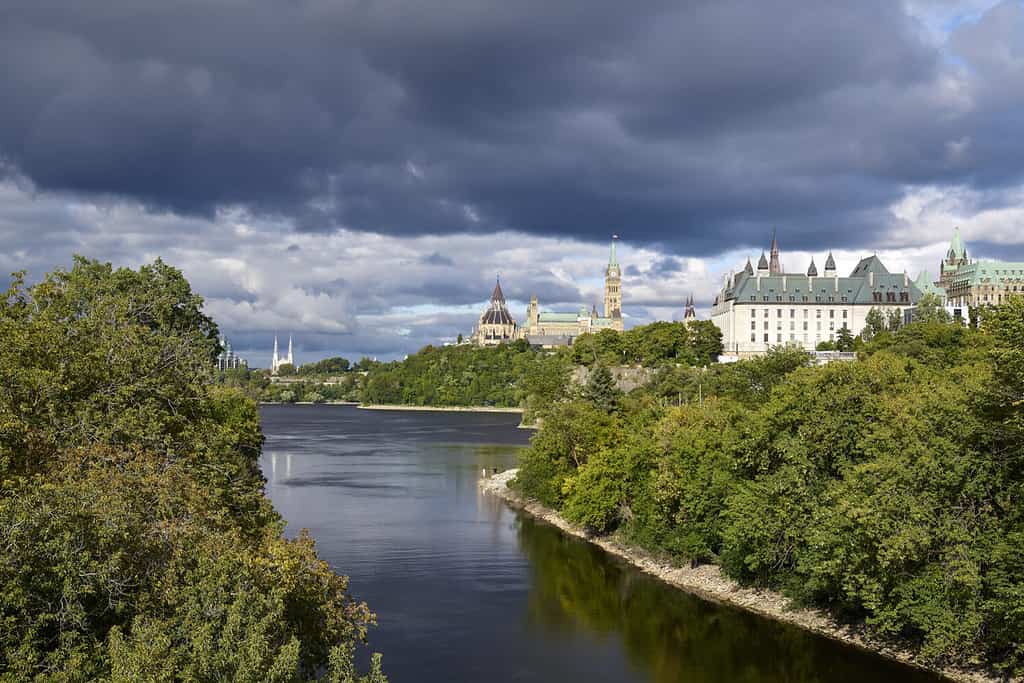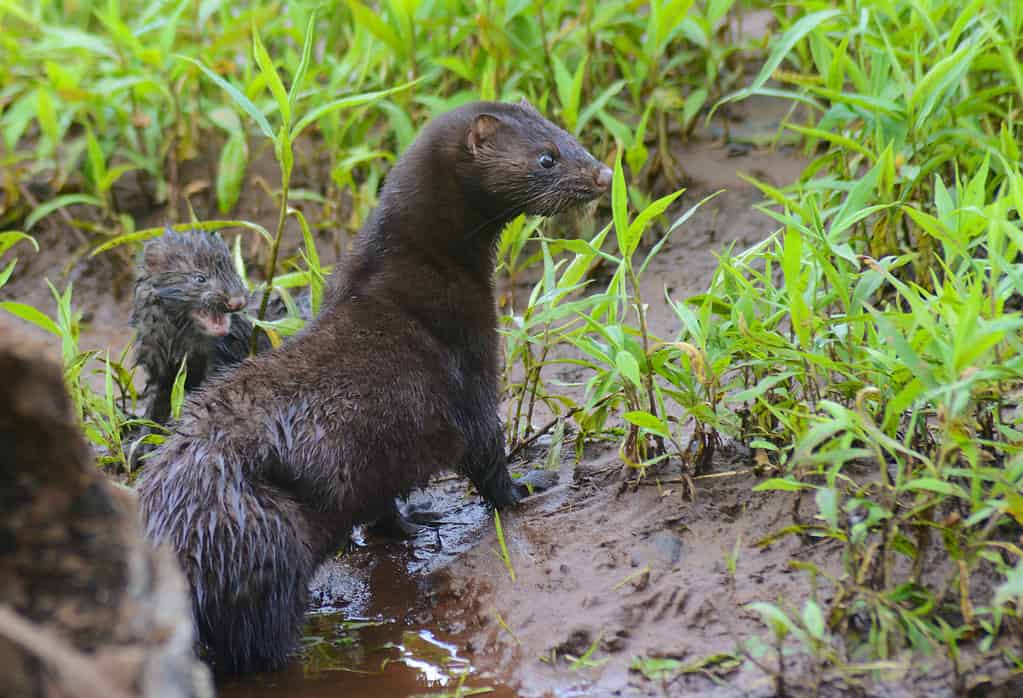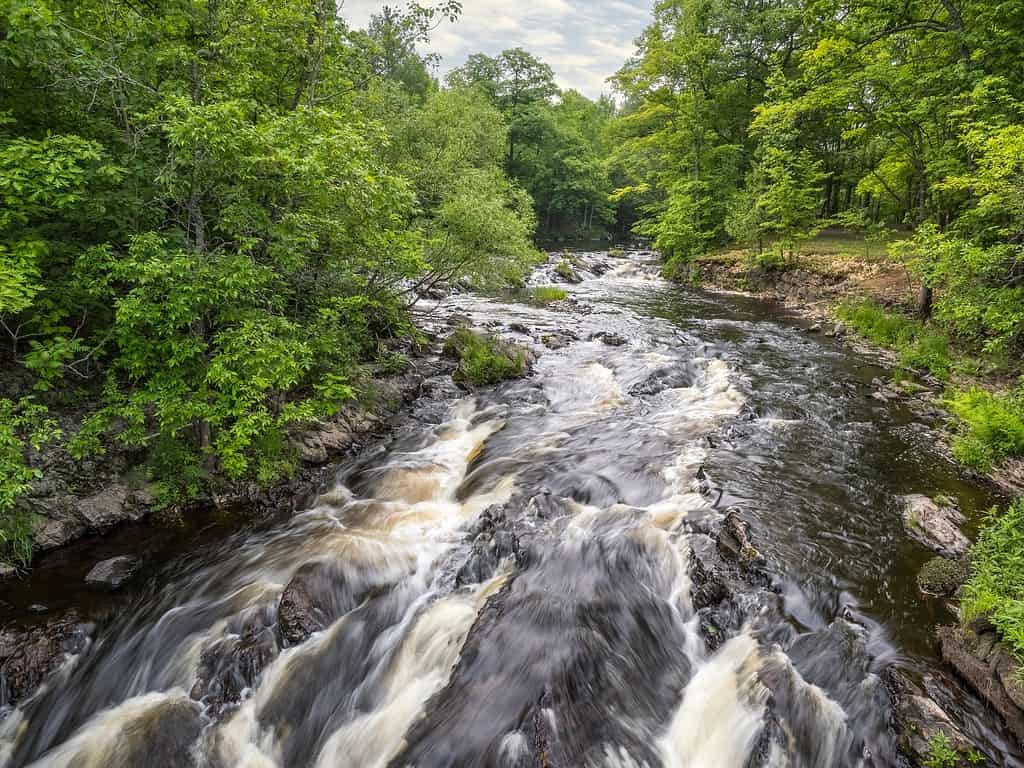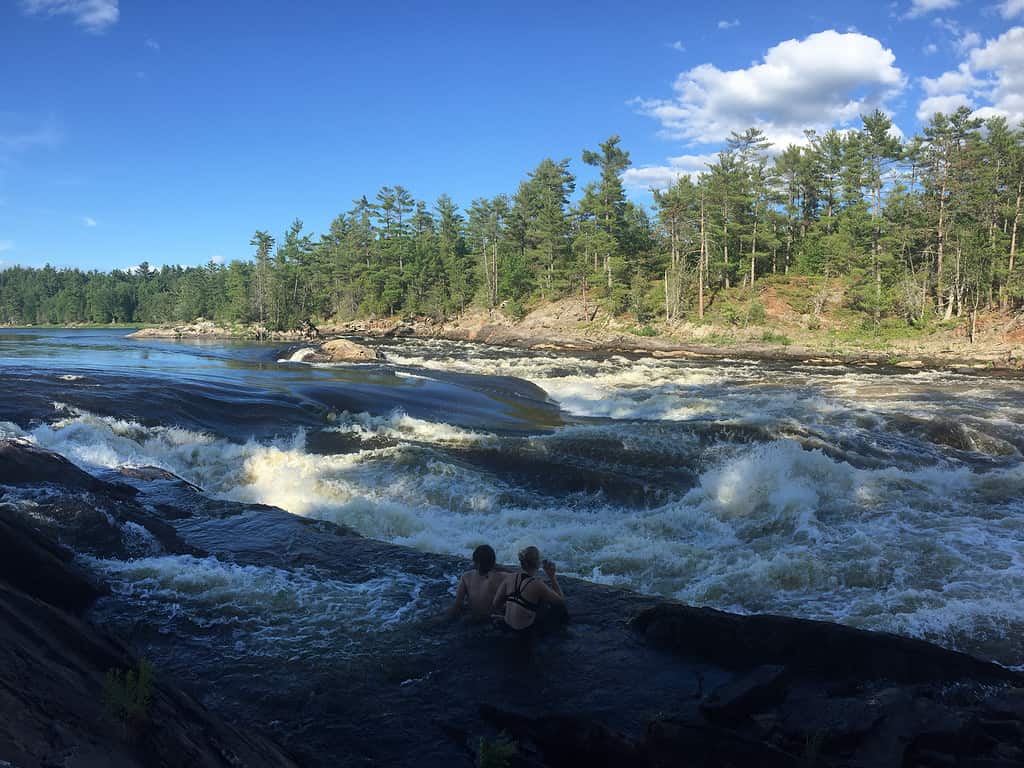Ottawa is one of the great rivers of the North American continent, stretching 780 miles (1,271km) across the country of Canada. This river rises in the western province of Quebec, forming a large portion of the border between the provinces of Quebec and Ontario. The river ends its journey at its confluence with the Saint Lawrence River, just west of Montreal. The river is vastly important to many cities and natural habitats along its length, and today we will learn more about this mighty body of water. How deep is the Ottawa River? What kind of wildlife relies on this river to thrive? We’ll learn all that, and more, as we continue on our journey below.
How Deep is the Ottawa River?
The Ottawa River is actually the deepest river in Canada, and even in North America. This incredible river reaches a maximum depth of 318 feet. This actually puts it on the list of “Ten Deepest Rivers in the World“. Our referenced maximum depth point rests between Chute-à-Blondeau and Greece’s Point in Quebec, Canada. This point is just over a mile upriver of the Carillion Hydroelectric Facility. The deepest point rests in the Carillion Reservoir, one of many man-made lakes or reservoirs along the Ottawa River.
Now, there is contention about the deepest point of this river. It is commonly agreed that the deepest point is at 318 feet, but we’re going to list our contenders for “Deepest Point on the Ottawa River” just to be careful.
The first we will look at is Lake Timiskaming, which is a large freshwater lake that is considered to be a part of the Ottawa River. We believe we would be remiss in not mentioning it, as it has a maximum depth of 709 feet (216 meters). Another source states that the Ottawa River reaches its deepest point just outside the town of Deep River in Ontario. This depth is listed at 402 feet (123 meters).
Finally, we’ll mention a fourth point that is deeper than the commonly agreed-upon depth. This point is in Moose Bay on the Holden Lake Reservoir, just west of Deux-Rivières and is listed as measuring a maximum depth of 565 feet (172 meters). We could not find information on how maximum depth measurements are chosen or ruled out if they are on the same river, so we listed all of the depths we could find. Regardless of which depth is the most correct, the Ottawa River does take its place as one of the deepest rivers in the world.
What Does “Ottawa” Mean?

The Ottawa River flows through two Canadian Provinces.
©Light and Vision/Shutterstock.com
It’s very good to understand why something is named what it is. Much like a lot of the rest of North America, the Ottawa River has deep significance for the indigenous and tribal people. These are the ancestral owners of the land, who lived here long before European Colonialism. The name “Ottawa” is derived from the word “adawe”, which means “to trade” in the Anishinàbemowin language. This is an Algonquin language, and the peoples who spoke it originally had control of the waters of the Ottawa River.
This river was the primary highway of the time for the area. It is sometimes called “the original Trans-Canadian highway”. This is likely why it ended up with a name bastardized or adopted from the word meaning “to trade”. However, “adaptation” doesn’t mean “based on originality”. According to the Ottawa Riverkeeper website, this is not the name that is given by the people who speak Anishinàbemowin. In fact, they call it “Kichi Sibi”, which means “Great River”. In French, this would translate to “La Grande Riviere”.
Where are the Headwaters?
The headwaters of this mighty river are located at the Lac des Outaouais. This is a lake in a region of western Quebec that is called Outaouais. This is the French name for the Ottawa River. So, in essence, the name translates to “Lake of the Ottawa River”, though a more complex or accurate translation may exist. We’ve included a map of where this lake rests to give you a better idea of where the Ottawa River begins.
As you can see, this is a fairly remote region full of various bodies of water. The headwaters are about 155 miles (250km) north of the city of Ottawa, which was named after the river. The headwaters are also only about 180 miles (290km) from the sprawling city of Montreal.
Where is the Mouth of the Ottawa River?

This is the Ottawa River near Ottawa, before it flows to its mouth in Montreal.
©Gregory Valle/iStock via Getty Images
After draining into the Lake of Two Mountains, the Ottawa River meets the St Lawrence River in the city of Montreal. By the time it reaches its mouth, it has flowed through its drainage basin, which drains around 56,500 square miles (146,300 square kilometers). We have selected Perrot Island in Montreal as our pin for our map showing where the Ottawa River flows into the St Lawrence River.
To the north and northwest of the island is the Lake of Two Mountains and the Ottawa River. The Ottawa River then passes to the west of the island and flows south to meet the St. Lawrence River at the southwest end of Lake Saint-Louis.
Wildlife and the Ottawa River

Minks are just one of the many small critters that rely on the Ottawa River for water and food.
©Betty4240/iStock via Getty Images
There are so many different types of wildlife along the Ottawa River, it’s almost unbelievable. It’s more believable when we consider that riparian habitats are some of the most rich wildlife habitats in the world. These areas play host to thousands of species of animals across the globe. The Ottawa River, specifically, is home to over 85 species of fish alone. Over 300 species of birds rely on this long, winding river. Additionally, 53 mammal species have a close relationship with its waters. Impressively, 33 species of amphibians and reptiles hang out along its banks, and 14 species or more of freshwater mussels thrive in the waters.
Some examples of animals living in or near the Ottawa River include minks, beavers, and otters. Large mammals like black bears and white-tailed deer spend their days along its banks, and squirrels, chipmunks, mice, and raccoons all live in the forests surrounding the rivers.
How Many Tributaries Does the Ottawa River Have?

This is the Montreal River, one of 19 or more major tributaries of the Ottawa River.
©Jim Schwabel/Shutterstock.com
The Ottawa River is a pretty massive watershed and has a ton of different tributaries. There are at least 19 major tributaries of the Ottawa River and we’re going to list those 19 here. This includes tributaries from the Upper Ottawa River and the portion of the river that flows from Lake Temiscaming all the way down to its mouth at the St. Lawrence River. We have sourced these tributaries from the Ottawa Riverkeeper website and we note that this may not be a complete list of all of the tributaries that flow into the Ottawa River.
- Camachigama
- Capitachouane
- Chochouane
- Darlens
- Kinojévis
- Blanquet
- Wabi Creek
- Kipawa
- Montreal River
- Mattawa River
- Petawawa River
- Bonnechere River
- Madawaska
- Mississippi River (no relation to the United States Mississippi River)
- Rideau
- South Nation
- Regaud
- Maganasipi
- Dumoine
- Noire
- Coulonge
- Gatineau
- Du Lievre
- Blanche
- Petit Nation
- Rouge
Since this is an article about the depth of the Ottawa River, we were unable to research and confirm the full names, lengths, or depths of any of these other tributaries. However, it is important to note the tributaries that make up the whole of a river and contribute to an entire watershed. All of these rivers, creeks, and waterways play important roles in the overall ecosystem of the river.
Summary

The Ottawa River spans hundreds of miles and hundreds of feet in depth.
©Kaitlyn Philip/iStock via Getty Images
The maximum depth of the Ottawa River is actually somewhat contested. The general consensus is that the maximum depth of the river doesn’t exceed 318 feet, but several lakes and reservoirs along the course of the river actually boast a greater depth. The other depths we looked at were as deep as 709 feet! Regardless, this is still one of the deepest rivers in the world and a very important part of life in Canada.
The photo featured at the top of this post is © onurkurtic/iStock via Getty Images
Thank you for reading! Have some feedback for us? Contact the AZ Animals editorial team.






